This binding was featured very briefly on the blog last year in my review of the North Bennet Street School’s 2015 Student and Alumni Show. After the show, I sent it off to England for the Society of Bookbinder’s International Competition. Just last week, I was finally reunited with this macabre little binding. Its presence on my bench reminded me that this binding needed a proper post documenting the steps involved in its creation.
This edition of Oscar Wilde’s The Nightingale and the Rose was printed by Rebecca Press in 1985 and includes wood engravings by Alan James Robinson of Cheloniidae Press. My design for both the nightingale and the rose are drawn straight from Robinson’s engravings. The text block was sewn on two flattened cords and rounded and backed in a job backer. Which was a bit excessive for such a tiny binding, but offered me a bit a humor. In lieu of a backing hammer, I used the flat, rounded side of my bone folder to achieve the rounded shape of the spine.
Once the forwarding on the book was complete, I could focus on the design. I photocopied the image of the nightingale and rose from the text; enlarging them to the desired size. These photocopies became my guide for drawing out each shape of the bird and flower. Beginning with the bird, the first onlays attached to the base leather were a silhouette of the body, the beak and feet. In order to get some depth and texture to the bird’s feet, before cutting out the two shapes I laid feathered onlays of maroon goatskin over thinned out terracotta goatskin.
Although I would normally use PVA to place my onlays onto the leather, I chose to use paste because I was worried about staining the tiny pieces of leather when applying the PVA. After the the onlays went down, I pressed the skin between acrylic boards. Then I back-pared the leather. In the image below you can see the shape of the onlays on the reverse side of the leather (the change in color appears because more flesh is being pared from the areas with onlays, this creates a smooth transition from onlay to base leather on the surface.)
After paring the leather, I was free to begin with the embroidery. When I embarked on this task, I had very loose plans and approached it in a very free form way. I would build up the image with embroidery and then switch to adding feathered onlays, then more embroidery until I felt satisfied with the look of the bird. You can see this progression below (please forgive the poor photography and variation in color).
With the design of the bird fully assembled and embroidered, I prepped for covering. After pasting out the leather, I laid down any stray tails from the embroidery beside a stitch to hide its appearance from the front. Then I progressed with the covering, formed the endcaps, wrapped the turn-ins around the cover boards and pleated the corners. After setting the boards, I put the book to rest between a small scrap of felt in my small wooden press.
Once the book had dried, I carefully opened each cover and began the steps to prep the inside for the leather doublures. The back doublure was embellished with a multi-onlay and embroidered rose. The steps involved in creating the rose mimic those used to create the bird. The tricky part here happened while back-paring. It was impossible to pare to the desire thickness for doublures without slicing through the rose onlay. So the rose is not a true back-pared onlay, it actually sits on the surface of the leather. I was worried this extra thickness might impact the neighboring flyleaf or the way the book closed, but neither became an issue.
The Nightingale and the Rose is a tale about a nightingale who chooses to give her life so that a young man may find love. By piercing her breast into the thorn of a rose, her blood stains a white rose red. This part of the story is illustrated with a tiny wood veneer inlaid “thorn”. The red goatskin Ascona onlay runs from the top of the thorn across the spine (at the “I” in Wilde) and to the rose on the back doublure.
The book is housed in a miniature quarter leather clamshell box. I used the same tan goatskin on the spine of the box which was used on the doublures. The rest of the case is covered in a paper I made using cotton and leek skins, also used for the flyleaves in the binding. The author name is stamped in matte grey foil on the spine and the title is stamped on a Mohawk label that sits in a recessed well. The trays are covered in granite colored Cave Paper.
The trays are lined with a light grey Silsuede fabric. I prefer using a faux suede to line boxes for embroidered books and veneer bindings, I think it offers a bit more cushion and less chance of wear on the binding.
I’m really proud of this little binding. My embroidered work is definitely evolving and I like the direction it took with The Nightingale and the Rose. I have a few fine bindings lined up to complete this year and I look forward to sharing their designs and techniques with you.
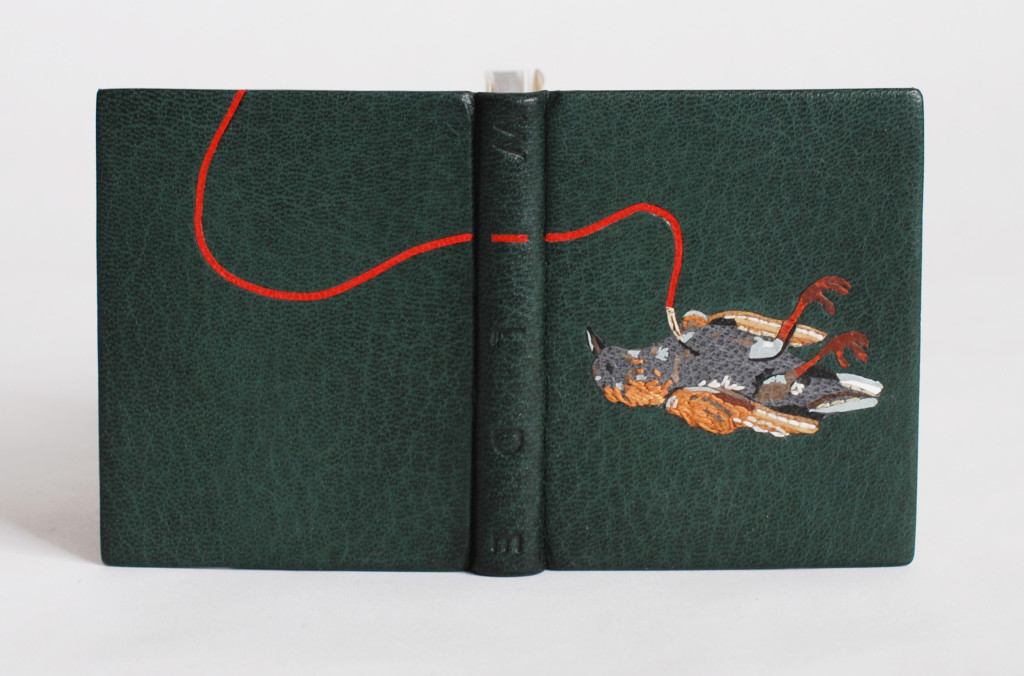
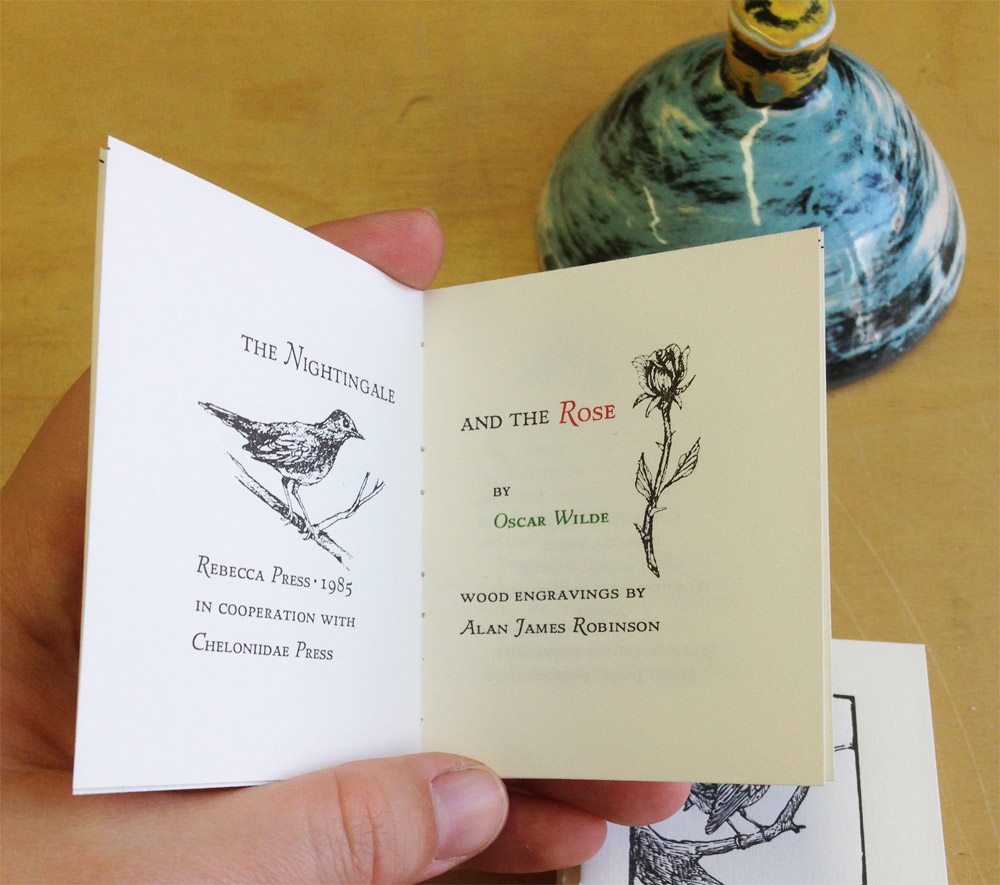
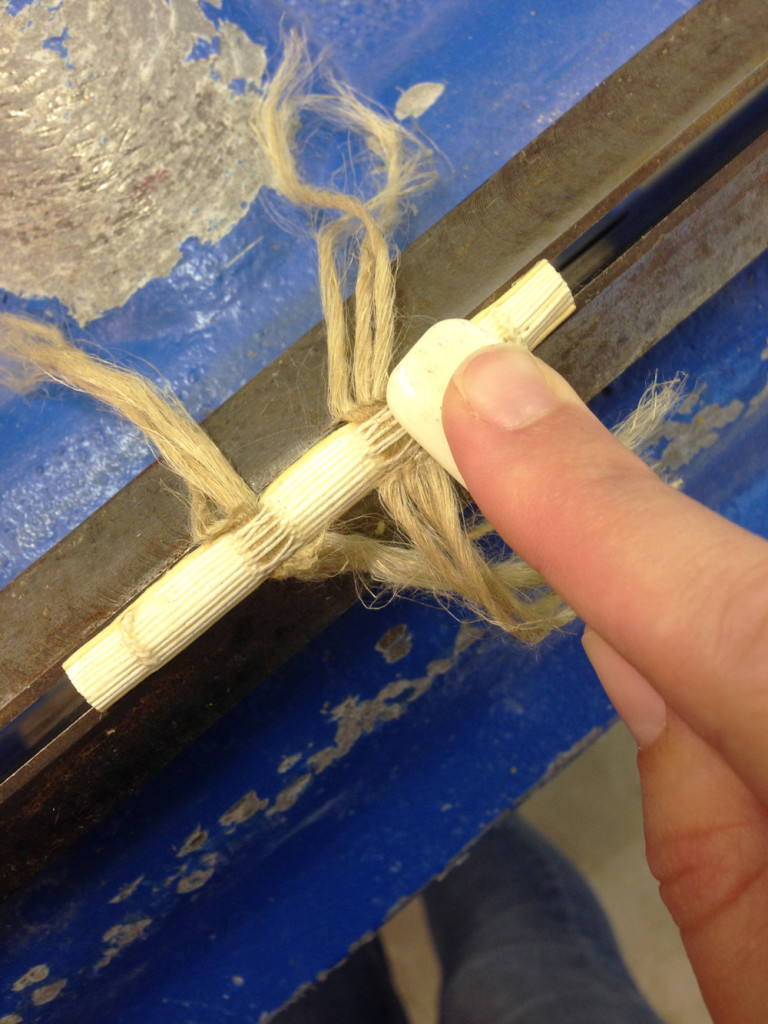
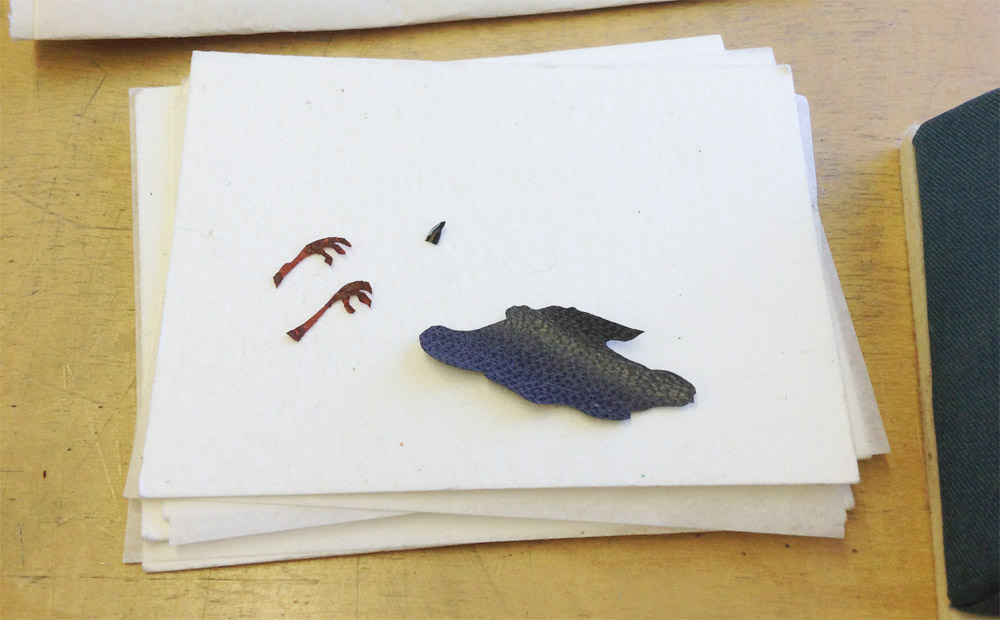
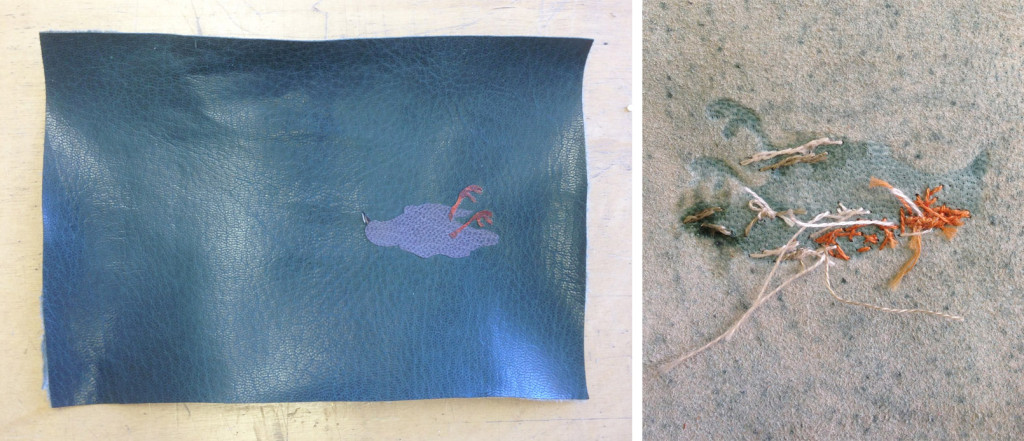
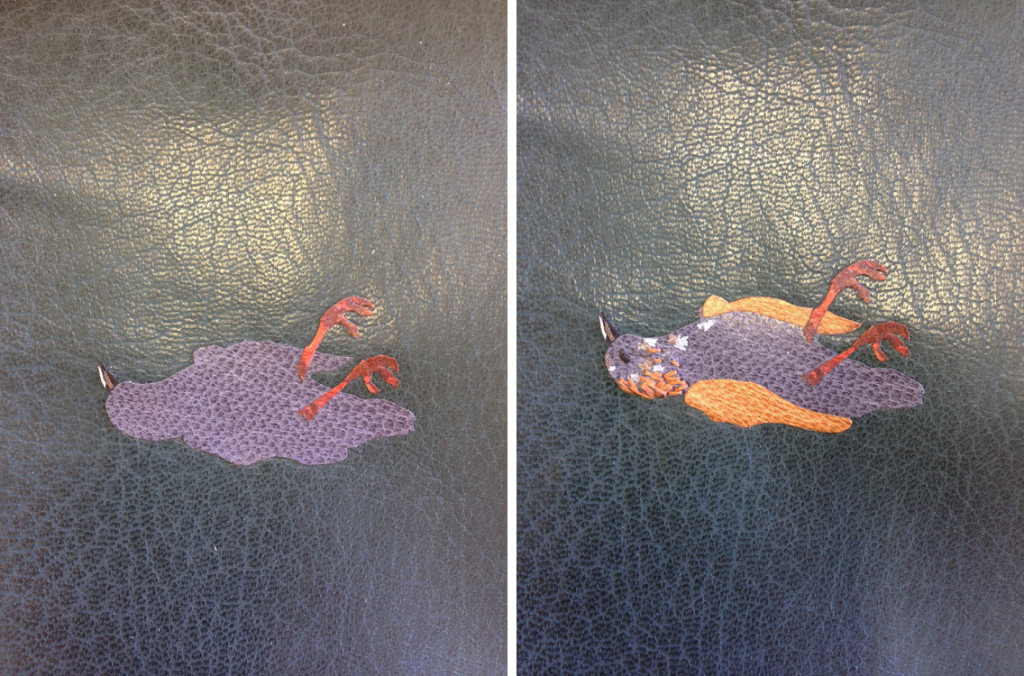
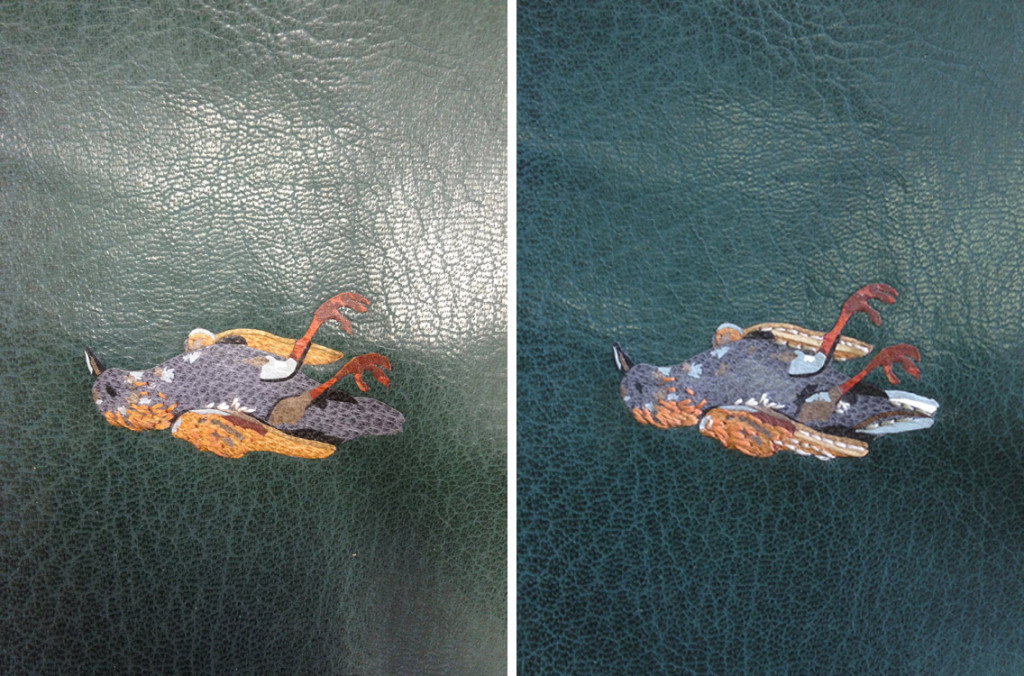
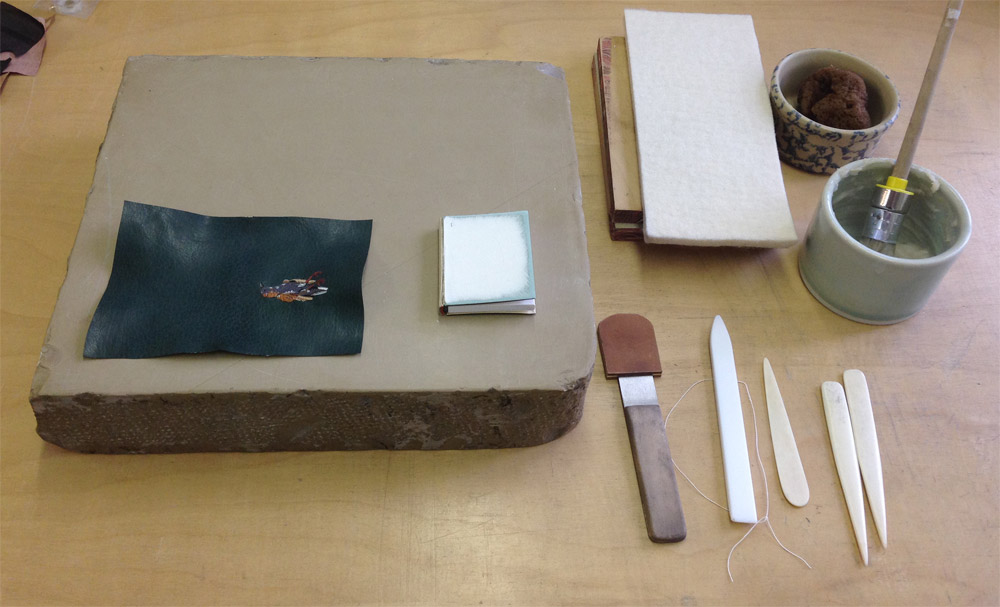
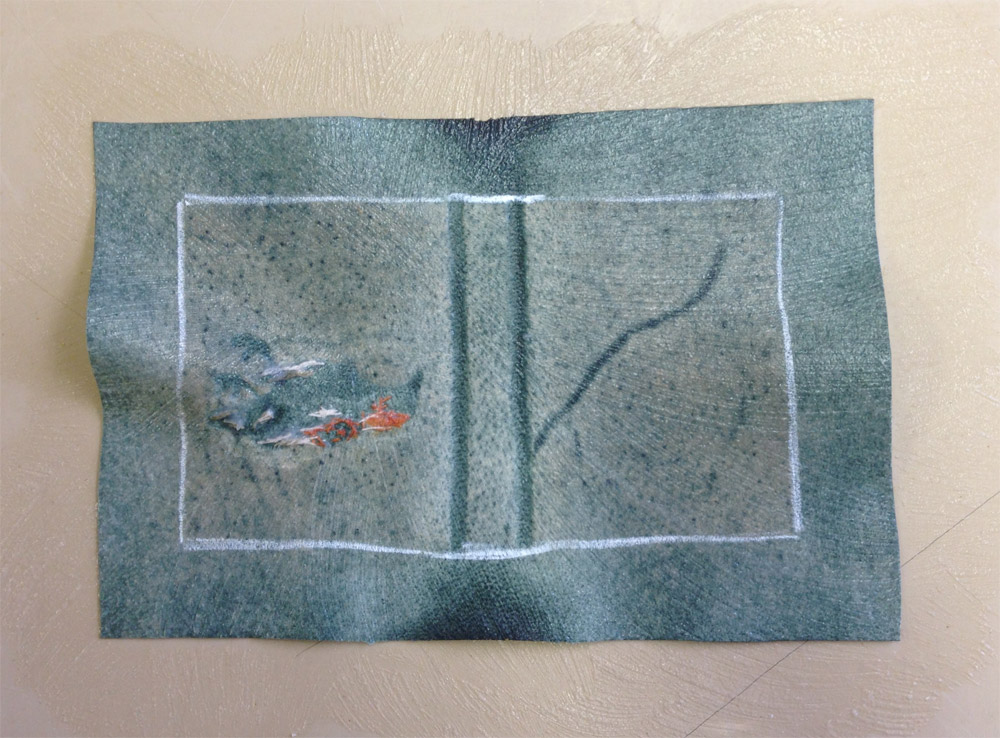
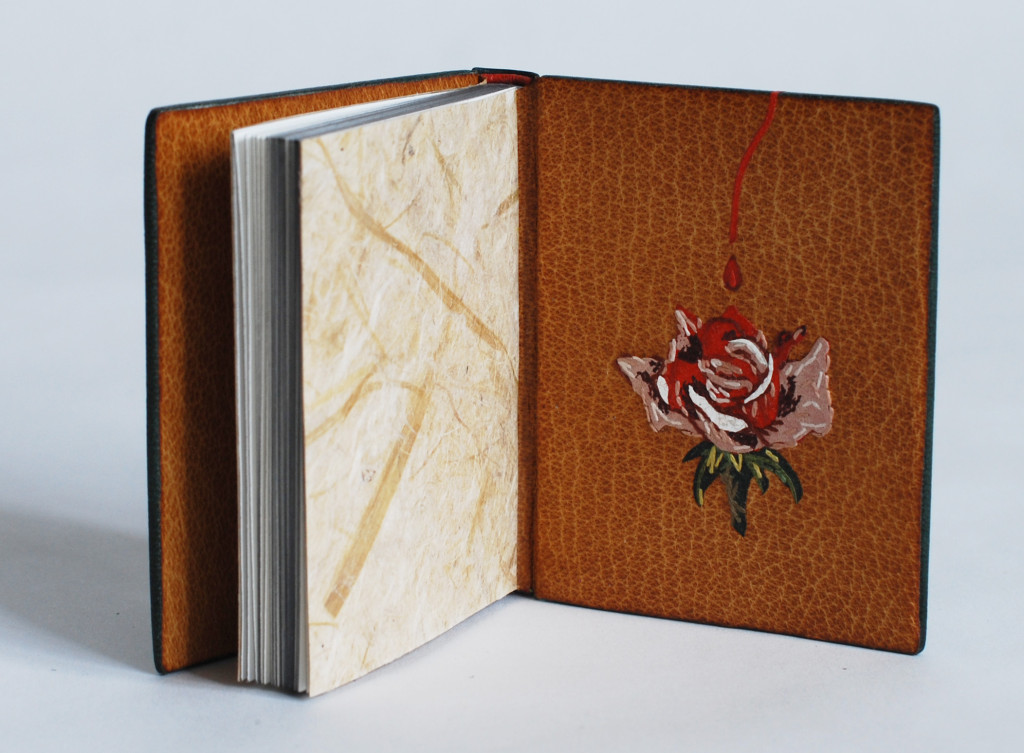
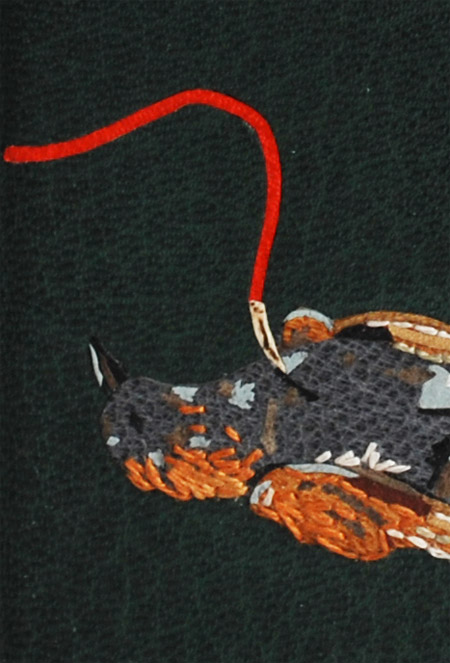
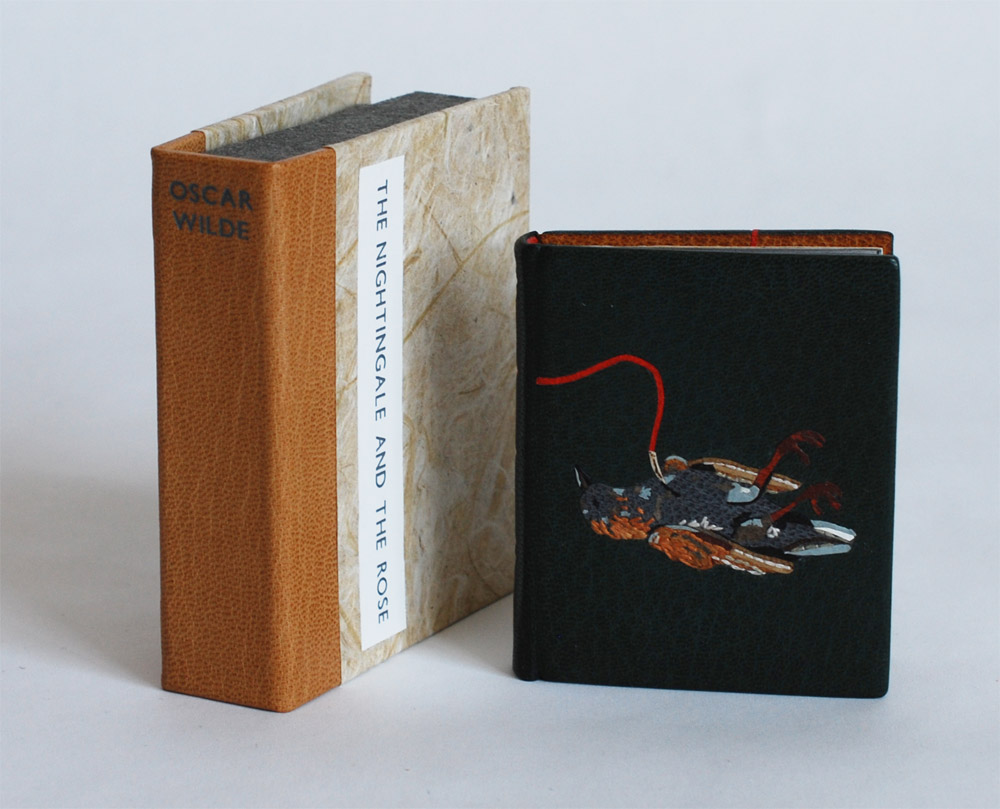
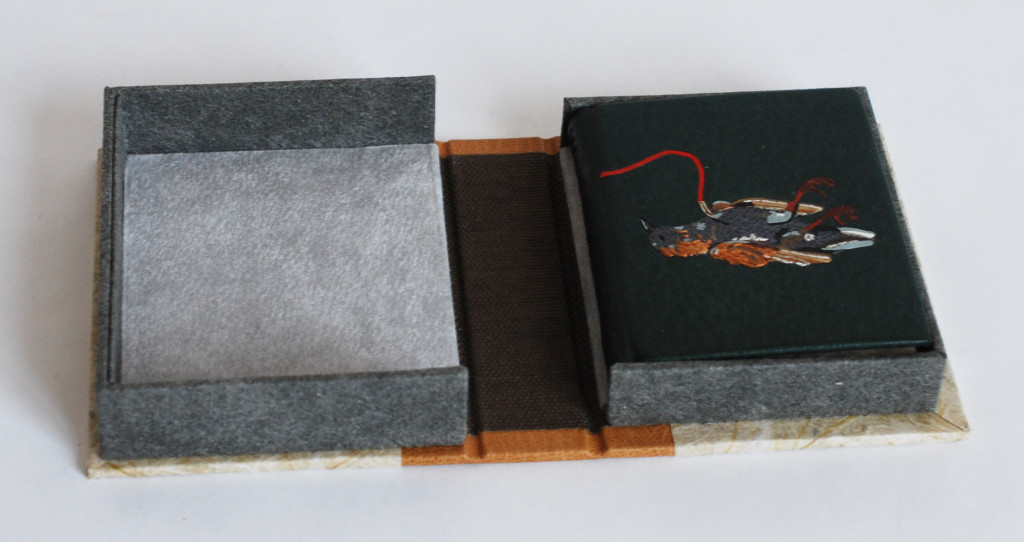

Erin, you are indeed a true artist. i would love to see this work of art….it looks so grand and beautiful. thank you for explaining how you put it together. Yes. you are a true artist. Joy
Wow, so beautiful and masterfully created! Something you should definitely be proud of. Congratulations Erin:) patty
Erin, thank you so much for creating this beautiful and intriguing binding for the Nightingale and the Rose, one of the miniature books I published under the Rebecca Press imprint. Love the finished product and really enjoyed the chance to see the binding come to life. I’m so glad Gabrielle sent me this link. Rebecca
So lovely to hear from you. I’m so thrilled to hear that you like the binding.